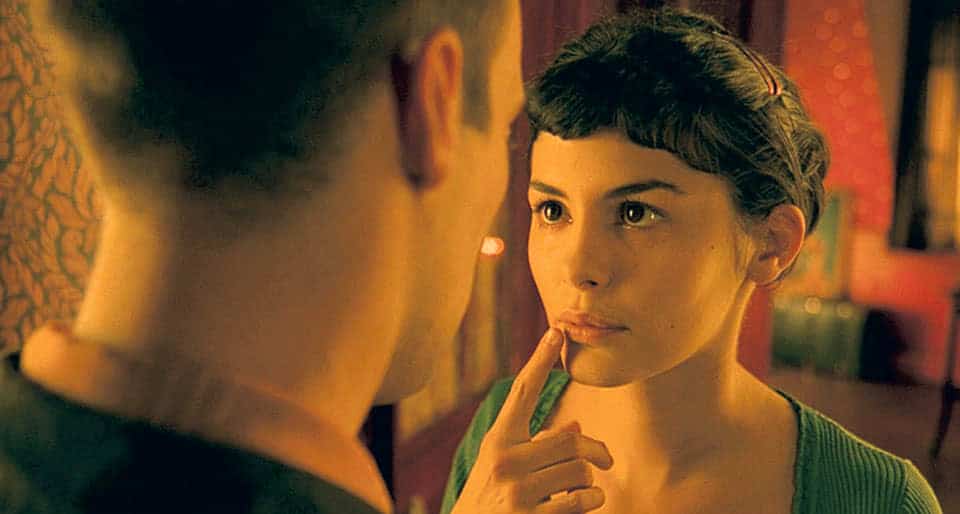The French new wave cinema favors content over aesthetic. While the ‘cinema du looks’ of the 80s favors style over content. Jeane Pierre Jeunet has been breaking all these conventions of French cinema. He creates a perfect consistence of style and expression in his films. His films have a specific eccentricity that screams his trademark style. He has broken the convention of French poetic realism by giving his characters a happy ending. In his cinema, the characters suffer childhood trauma, physical disability, and have outcast personality traits. Therefore, he believes they deserves their own happy ending.
Magical Realism is a genre where the plot is set in a real world with few mystical elements. Latin American directors like Guillermo del Toro and Alejandro Gonzalez Inarritu have been credited, for introducing magical realism through great films like Pans Labyrinth, Birdman, and Beasts of the Southern Wild. But, film experts still don’t acknowledge the significance of magical realism in Jeunet’s cinematic universe. Beyond his stylized set designs, there is a deeper socio-political context. Although, the use of Steampunk aesthetics and hyper-realism is quite extensive. The resentment of a homogeneous society due to modern capitalism and technology is quite prevalent in his films. His strong support for individualism is mostly displayed through his characters with idiosyncratic personality traits.
This is my analysis of the subsequent prevalence of this genre in his various works from full-length feature films to short films.
Amelie (2001)
Amelie is one of his most commercially successful and widely celebrated films of all time. Although the plot runs in the actual world, Jeunet romanticized Paris by using a warm color palette. He created an idealized version of Paris. The one which is too far from real but still seems to be familiar. The magic of the film lies in the optimism and generosity of the protagonist ‘Amelie’. In Amelie, ‘kindness’ and ‘love’ are the dominant motifs. Besides the fun-loving parable of ‘kindness’, there is a darker theme of loneliness, childhood trauma, and the struggles of an introverted young woman.
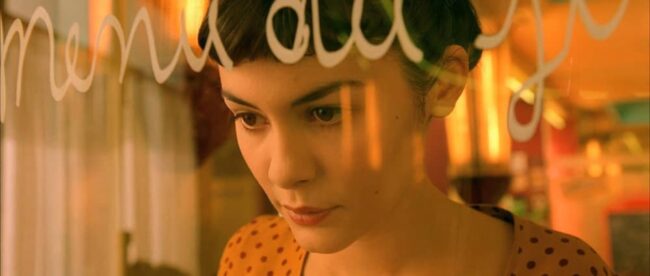
Nino and Amelie are both an outcast with unusual interests. Amelie finds unique ways to help strangers which further adds a magical twist to the simple plot. The strong use of green, yellow and red hues creates a utopian Paris experience. The small gestures of kindness for random strangers bring a sense of purpose to her mundane life and persuades her to go on unusual adventures. Despite being an arthouse foreign film, Amelie has a universal appeal due to its happy ending. Here, Jeunet rebels against the conventions of French poetic realism and gives the protagonist a happy ending she deserves.
The city of Lost Children (1995)
The city of Lost Children is a science fiction surreal fantasy. It is set in a dystopian world where an eccentric scientist named Krank steal children’s dreams. He kidnaps them with the help of four clones. He eventually kidnaps Denree, the baby boy brother of One (a circus clown). One unites with the young pick pocketer Miette who works for the octopus (two twin sisters) to rescue his brother. Jeunet continues his resentment of capitalism by contrasting the selfish and apathetic adults with the innocence and empathy of children. His films always have a satirical commentary on the modern world. ‘The City of Lost Children’ continues this theme but with hyperreal steampunk aesthetics and special effects.

The dutch tilts, zoom-ins, fisheye, and perspective shots with greenish monotone further creates a weird dreamy ambiance. Krank, the octopus’s sisters, and the diver are the oppressors while the children and clones are the prey to their exploitation. By depicting child labor and mistreat he makes a commentary on childhood trauma. Jeunet further takes a jibe on the homogeneous society by portraying four clones with similar personality traits who serve Krank.
A very long engagement (2004)
A very long engagement is an epic war romance . The story revolves around Mathilde. She is an orphan girl who is determined to find her fiancé Manech. Manech and four other army soldiers are declared dead by their Warfield companions but, Mathilde’s instincts still believes in his that he is alive. She goes on a long quest to find him. Along the way, she meets the lover and wives of the other four soldiers. There is unfolding of ‘suspense’ as with each meeting, she finds a new clue which helps in her investigation.
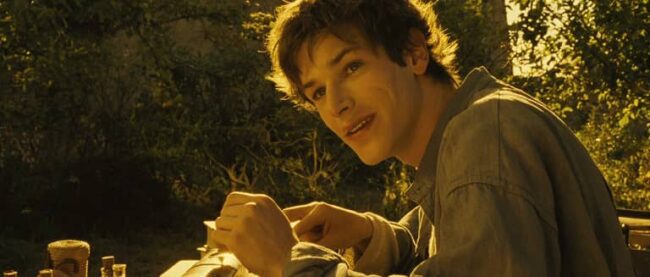
He Manech and Mathilde’s childhood romance keeps recurring as a reminiscence of their naïve love. Jeunet contrasts the soft masculinity of Manech with the cynical wartime scenes during the French- german war. He lightens the horror and brutality of war with his idiosyncratic direction style. The main theme of ‘hope’ and ‘determination’ is communicated through Audrey Tautou’s character. He humanizes the soldiers by showing their backstories. Most of the characters have physical disabilities. Even Mathilde struggles with a polio-inflicted leg. Thus, it simply concerns the barbarity of war and destruction.
Micmacs (2009)
Micmacs is a surreal revenge comedy revolving around a lonely video store clerk named Bazil. Bazil loses his job after he accidentally gets shot in his head from a gunshot outside the store. He notices the arms trades company logo from which his father died on the war site. He also gets to know about the company of the bullet, which accidentally got stuck in his head. Jeunet mercilessly mocks the world arm trade companies. He portrays them simply as villains without any grey shades. His villains are modern capitalist aristocrats who are only motivated by power and money.
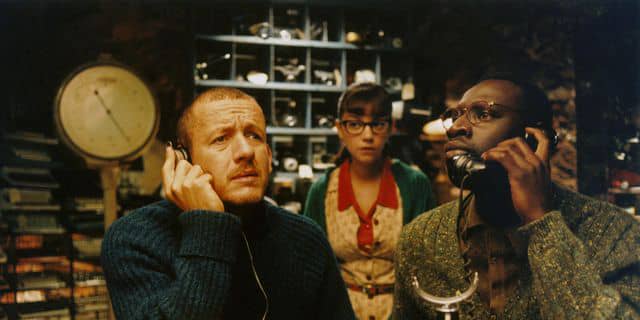
Thus, there is a significant satirical symbolization of greed. His displeasure for modern corporate apathy is simply evident in Micmacs. Bazil’s newfound companions have different abilities of creating magical things from the junkyard they live in. They live happily togehter, as they share the same purpose of helping others. When Bazil finds a motive to get revenge from those powerful industrialists, his newfound family supports him as they have a sense of shared oppression. Jeunet has long been a supporter of Individualism in his films. But in Micmacs, he highlights the importance of thriving in a community. The dreamlike revenge plans are orchestrated through his trademark Rube Golberg sequences. Thus, Micmacs is more than a satire on market competition, international arms trades, and industrialists, it is a mockery.
The Young and Prodigious T.S. Spivet (2013)
The Young and Prodigious T.S. Spivet revolves around a young and lonely genius T.S. Spivet. He lives in the countryside Montana with his emotionally distant parents, an ignorant sister, and a quiet brother Layton (who shot himself to death). The fantasy adventure of a young misunderstood boy shifts to a sentimental theme of dealing with loss and grief. The whole film is displayed and narrated through Spivet’s perspective. The initial charm of the film seems similar to the magical world of Hugo and Mathilda. Jeunet contrasts the innocence of a child’s vivid imagination to the bitter manipulation of the adult world.
He takes a jibe on the double standards of reality TV and media as they distort reality and capitalize on human emotions to mint money. Spivet gets invited to receive a prestigious prize at Smithsonian. He embarks on a journey without telling his family. The film has more Wes Anderson-like aesthetics unlike the highly stylized warm palette used by jeuent . But, the inclusion of certain oddball characters, and surreal thought-provoking subplots still gives us hope that Jean Pierre has not lost his unique charm.
Delicatessen (1991)
Delicatessen is a romantic comedy set in the middle of a post-apocalyptic poverty-stricken France. Thus, the majority of humankind is propelled towards cannibalism. Jean Pierre lyrically exposes the loss of humanity and apathy in his bizarre dystopian world. Certain scenes have unique orchestrated sequences knitted around a set of oddball characters. There is dark humor even in the most grotesque scenes. Jeunet balances the disturbing theme of transgression with his classic surrealist style. Butcher Monsieur Clapet is the landlord of an apartment building where he secretly conspires to murder or suicide of his tenants to get human meat. The exhaustion of resources has forced humans towards inhuman practices.

Here, the apartment building represents a dysfunctional society, and the butcher represents a fascist dictator. The class system is made based on an individual’s choice of food. The tenants live in their delusion of being privileged for choosing meat. On the contrary, a minority of vegetarians are hiding in the sewers rebelling against the fascists. There is a recurring theme of ‘rhythm’ in some of the weirdest scenes, from a lady who contemplates various ways to end her life to the squeaking of a spring bed providing an ideal rhythm for a cello player in another room.
Things I like and things I don’t like (1989)
Things I like and things I don’t like is one of Jeunet’s earliest work which displays his distinctive style in peak form. In this short film, Jeunet’s constant Dominque Pinon plays the protagonist who breaks the fourth wall while sitting in an almost prison-like vacant room. He specifies his likes and dislikes in daily life routine parallelly visualised with an attention to detail editing. A human’s individualistic approach to annoyance from little details is expressed through the wide lenses.
He uses the black and white screen to add more poetic realism while taking the liberty of the French New wave. The cinematography looks as old as 1920s camerawork. The effects of constant flickering and blurry screen adds further realism. Thus, it is a class arthouse with the utmost quirks and charm of Jeunet’s cinema. The inspiration for Amelie’s nuanced love for thinking about random people doing random things is quite evident in “things I like and things I don’t like’. Dominique Pinon’s monologue about the small pleasures of life, from pulling up his socks to eating a mouthful of omelet explores the magic of mundanity. Thus, a fascinating visual creation of a complex human mind.
The Bunker of the Last Gunshots (1981)
The Bunker of the Last Gunshots is Jeunet’s earliest and rare collaboration with Marc Caro before Delicatessen. It is a 25-minute short film revolving around military men working inside a bunker in an unknown location. He uses a dark greenish monochromatic canvas with an avant-garde like set design. Therefore, the paranoid ambiance is enough to make the mainstream popcorn audience deeply uncomfortable. The realism of the emotionless Nazi soldiers under the bunker gets twisted when one of them accidentally sets the system off. It shakes up the already cold soldiers who start killing each other.
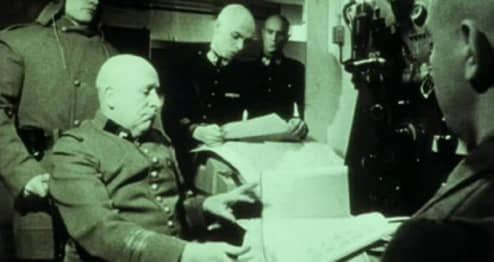
The characters don’t speak at all. It is a silent film with the sound of bees, radio, and some of their gibberish code language. Although the soldiers lose their sanity , the dull bunker cut off from the outside world is enough to make anyone go insane. The timeline, location, and cause of the sudden massacre are not disclosed in the short film. Jeunet and Marco might want to leave it to the audience to interpret various possibilities. It is one of Jeunet’s most nihilistic films.
Le manage (1980)
Le manage is the brainchild of Jeunet and Caro’s highly creative minds. It is a stop-motion animated film with a melodramatic plot. Jeunet continues with his magic by using weirdly intriguing-looking puppets to represent the story of child abuse. The story revolves around few children who are siblings. One snowy night they are looking outside the window longing to go and play outside. They get the opportunity to go outside and ride the merry-go-round until one old man urges them to go downstairs, below the swing. The kids get horrified to see the children of their age pushing the lever that makes the device spin.
They children are imprisoned to pull the leverage and spend the rest of their lives underneath. Jeunet amplifies the contrast of childhood privileges and the loss of innocence by adding an emotional background score in the end. It is a non-talkie short film and has a heart-touching plot that reflects the initial genius of Jeunet and Caro. With the theme of inflicting childhood innocence with unique animation, he managed to create pathos.

